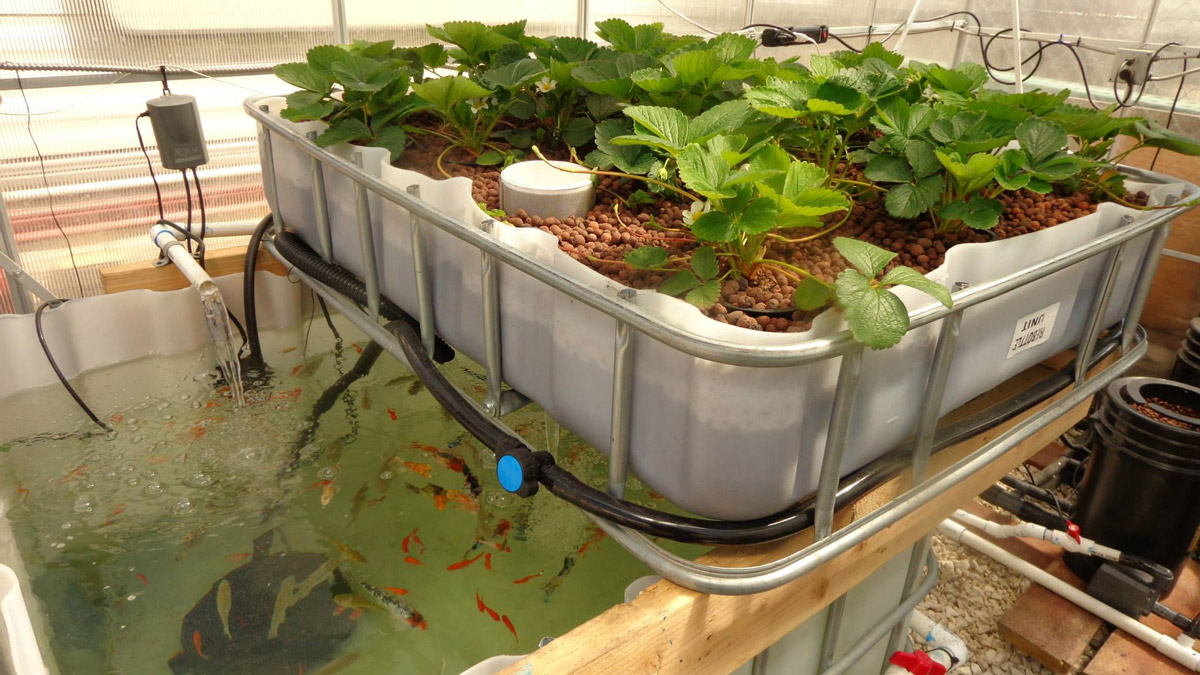Aquaponics is a delicate balance between fish, plants, and beneficial bacteria. Water quality is the heart of a successful system, as it directly affects fish health, plant growth, and bacterial efficiency.
The four most important parameters to monitor are:
✅ pH – Affects nutrient availability and bacterial efficiency.
✅ Ammonia (NH₃/NH₄⁺) – A byproduct of fish waste; toxic in high amounts.
✅ Nitrites (NO₂⁻) – A transitional compound in the nitrogen cycle; harmful to fish.
✅ Nitrates (NO₃⁻) – The final product of the nitrogen cycle; essential for plant growth.
By regularly testing and maintaining these levels, you can prevent major system failures and ensure optimal conditions for both fish and plants.
Why Water Quality Matters in Aquaponics
🚰 Water is the life force of aquaponics. It supports:
-
Fish health – Poor water quality leads to stress, disease, and even death.
-
Plant growth – Unbalanced pH or nutrient deficiencies cause slow growth.
-
Bacterial efficiency – The nitrogen cycle relies on a stable environment.
Regular monitoring allows early detection of problems before they harm your system.
Key Water Parameters to Monitor
1. pH – The Foundation of Aquaponics
✅ Ideal Range: 6.5 – 7.5
Why It’s Important:
-
Controls nutrient availability for plants.
-
Affects bacterial efficiency in converting ammonia.
-
Impacts fish health—too high or low can cause stress.
How to Test:
✔ Use a pH test kit or digital pH meter.
✔ Test daily at first, then at least weekly.
How to Adjust:
🔼 To Raise pH: Add potassium bicarbonate or calcium carbonate (crushed coral, eggshells).
🔽 To Lower pH: Add phosphoric acid or dilute with rainwater.
⚠️ Avoid rapid pH changes—adjust gradually over a few days.
2. Ammonia – The First Warning Sign
✅ Ideal Level: 0 – 0.5 ppm
Why It’s Important:
-
Comes from fish waste, uneaten food, and decaying plants.
-
High ammonia kills fish quickly by damaging their gills.
How to Test:
✔ Use an aquarium ammonia test kit (liquid-based kits are more accurate).
✔ Check daily during cycling, then weekly.
How to Reduce Ammonia:
✅ Feed fish properly – Avoid overfeeding; remove uneaten food.
✅ Increase aeration – Oxygen supports bacterial conversion of ammonia.
✅ Ensure proper filtration – Use biofilters to house bacteria.
✅ Add more plants – They absorb excess nutrients.
🚨 Danger Zone: If ammonia exceeds 2 ppm, do a 25% water change immediately.
3. Nitrites – The Silent Killer
✅ Ideal Level: 0 ppm
Why It’s Important:
-
A byproduct of ammonia breakdown, but still toxic to fish.
-
Causes "brown blood disease" in fish, reducing oxygen in their bloodstream.
How to Test:
✔ Use a nitrite test kit weekly.
✔ Check daily during cycling.
How to Reduce Nitrites:
✅ Allow cycling to complete before adding fish.
✅ Increase oxygenation – Nitrifying bacteria need oxygen.
✅ Add more biofiltration – Bacteria colonies help convert nitrites into nitrates.
🚨 Danger Zone: If nitrites reach 1 ppm or higher, do a partial water change and increase aeration.
4. Nitrates – The Plant Fertilizer
✅ Ideal Level: 5 – 40 ppm
Why It’s Important:
-
The final product of the nitrogen cycle; harmless to fish.
-
Essential for plant growth—acts as a natural fertilizer.
-
If too high, it can stress fish.
How to Test:
✔ Use a nitrate test kit weekly.
✔ High levels indicate good bacterial conversion of nitrites.
How to Control Nitrates:
✅ Grow more plants – Leafy greens absorb the most.
✅ Harvest regularly – Keeps plants from being overloaded.
✅ Perform occasional water changes – Especially in high-nitrate systems.
🚨 Danger Zone: If nitrates exceed 80 ppm, fish may become stressed. Add more plants or do a 10-20% water change.
How Often Should You Test?
Parameter Frequency During Cycling Frequency After Cycling pH Daily Weekly Ammonia Daily Weekly Nitrites Daily Weekly Nitrates Every 3 days Weekly📝 Tip: Keep a water quality log to track trends and catch issues early!
Additional Water Quality Factors to Consider
🌡️ Temperature:
-
Ideal range depends on fish species (e.g., tilapia thrive at 22-30°C / 72-86°F).
-
Affects bacterial efficiency—colder temps slow the nitrogen cycle.
💨 Dissolved Oxygen (DO):
-
Fish and bacteria need oxygen to survive.
-
Use air pumps and water movement to maintain good oxygen levels.
💧 Water Hardness & Alkalinity:
-
Helps buffer pH swings and provides essential minerals.
-
Adjust with crushed coral, limestone, or potassium carbonate if needed.
Troubleshooting Common Water Quality Issues
🚨 Problem: Fish acting sluggish, gasping at the surface?
🔹 Possible cause: Low oxygen, high ammonia, or nitrites.
✅ Solution: Increase aeration, check ammonia/nitrites, and do a water change.
🚨 Problem: Yellowing plant leaves?
🔹 Possible cause: pH imbalance or nutrient deficiency.
✅ Solution: Check pH, add iron if needed, or adjust nutrient balance.
🚨 Problem: Algae growth?
🔹 Possible cause: Too much sunlight or high nitrates.
✅ Solution: Shade the tank and increase plant uptake of nutrients.
Conclusion: Consistent Monitoring = A Thriving System
Water quality is the key to success in aquaponics. Regularly testing pH, ammonia, nitrites, and nitrates helps prevent issues before they become serious.
💡 Remember:
✅ Keep pH balanced (6.5 – 7.5).
✅ Ammonia and nitrites should always be 0 ppm.
✅ Nitrates should stay below 40 ppm.
✅ Test water weekly and adjust as needed.
By maintaining good water quality, your aquaponic system will thrive—providing healthy fish, lush plants, and a self-sustaining ecosystem.

Comments
No comments yet. Be the first to comment!
You must be logged in to comment. Login